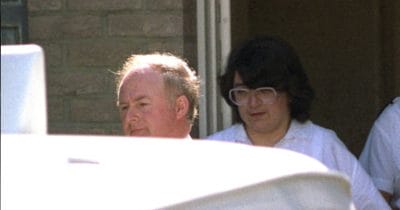
Nearly 75 years ago, Marine PFC. Emmett L. Kines was killed in action during the World War II. He was only 24 years old.
Kines and about a thousand other soldiers were quickly buried in a mass grave after fighting the Battle of Tarawa in 1943.
Military officials declared that his body was unrecoverable back in 1949.
But that was not the whole truth …

In November 1943, Kines fought with his fellow Marines on a small island of Betio in the Tarawa Atoll of the Gilbert Islands, in an attempt to secure the island from the Japanese.
Over several days of intense fighting, approximately 1,000 Marines and Sailors were killed and more than 2,000 were wounded.
Kines died sometime on the first day of battle, according to reports.
The hundreds of thousands who did not come back alive from the battle were disposed in shallow graves.

But thanks to the amazing efforts of the nonprofit History Flight, these soldiers are slowly being recovered and sent back to their homes in the States for a proper burial.
In June 2015 the nongovernmental History Flight discovered a burial site on Betio Island and recovered the remains of what they believed were 35 U.S. Marines who fought during the battle.
Lab analysis, in conjunction with the totality of circumstantial evidence available, established Kines’ remains were included.

History Flight has predicted that around the island there are at least 43 temporary burial sites with up to hundreds of soldiers buried in each one.
On National POW/MIA Recognition Day, Kines’ remains were returned to West Virgina with police and military escorts.
He didn’t have many relatives left in life – but there was one.
His only remaining sibling, 90-year-old Betty Huffman, were there to receive him.

She told the Mountain Statesman that being a Marine was something Kines had always wanted to do.
Huffman recalled being with him all the time and said being on the farm with him were some of the happiest days of her life.
Mark Noah, History Flight’s founder, said he feels that bringing these men home is like putting back a little bit of America.
In a way, Kines being brought home helps close an unhealed wound in his family.

The nonprofit is having a positive impact on American families. History Flight uses cutting-edge remote-sensing technology to find MIA loss sites.
Mark Noah explained that it is important that the families have closure and to restore the dignity of the missing soldiers.

“Every time one of these men goes home is just wonderful. I like to tell people it’s like putting a little bit of America back into America,” he said.
“It’s important to give closure to the family, and to also restore the dignity of the missing individual. So we are very pleased that Emmett Kines is back where he belongs.” he explained.

American soldiers sacrifice immensely to keep us safe — this has been consistent throughout our nation’s history.
They risk life and limb to fight for our freedom, and bravely face the prospect of danger, injury, or even death.
The United States government stopped searching for the 78,794 missing servicemen from WWII in 1948.
But so far, History Flight has identified hundreds of MIAs and plans to reunite more families with their loved ones.
Their initiative is something we should all pay tribute to!
If you believe that all American WWII soldiers deserve a proper burial at home, makes sure to SHARE with friends and family on Facebook.





